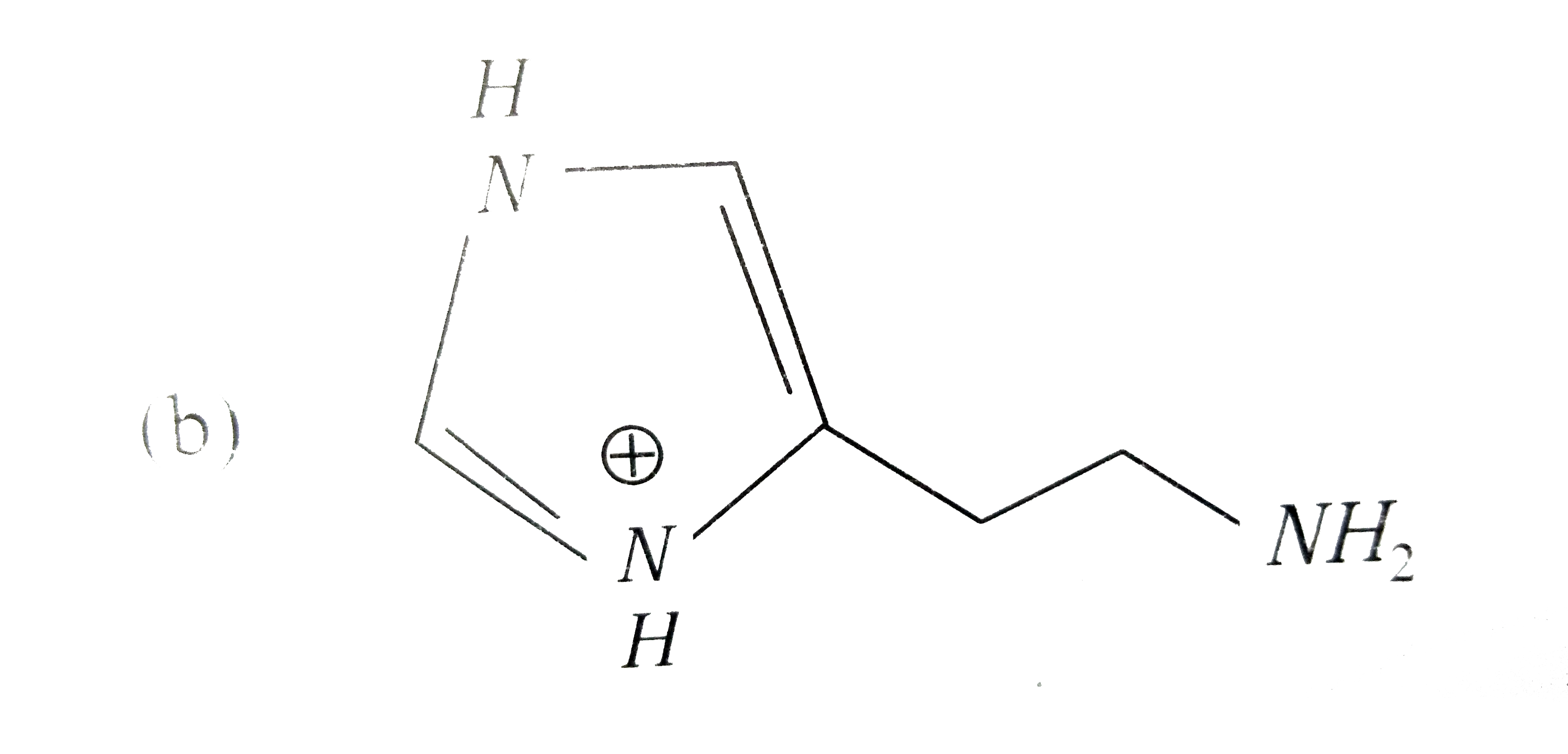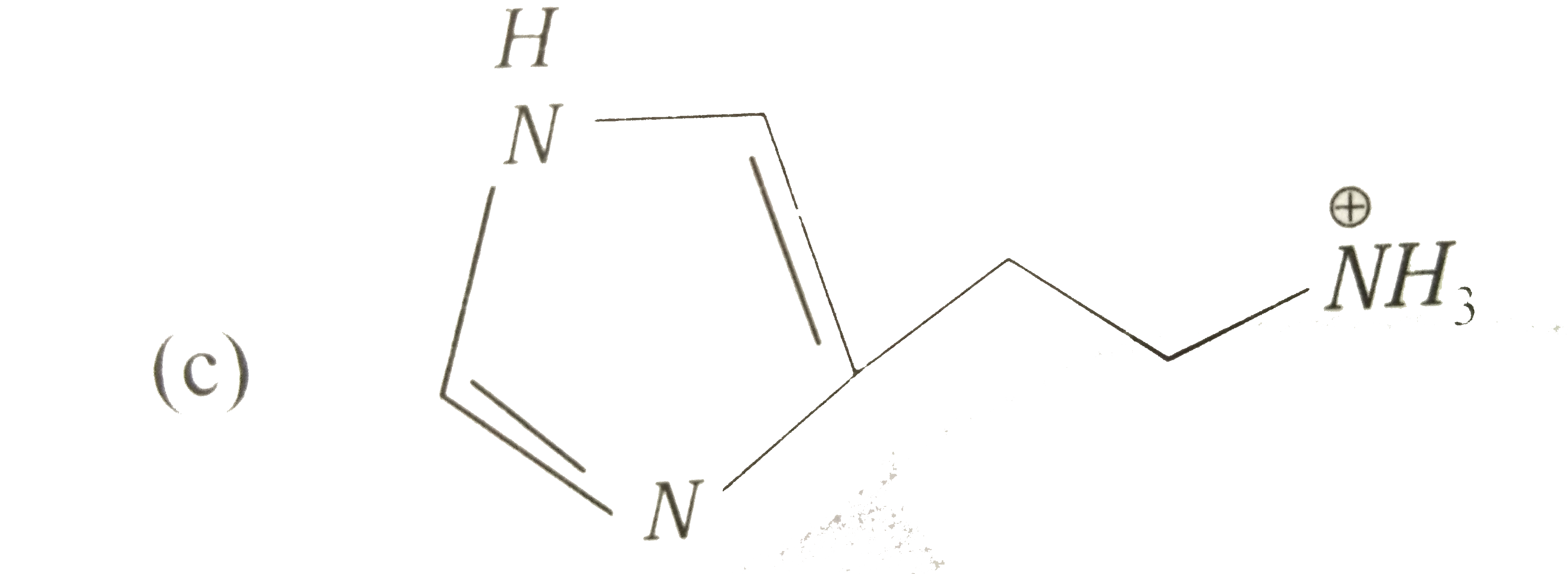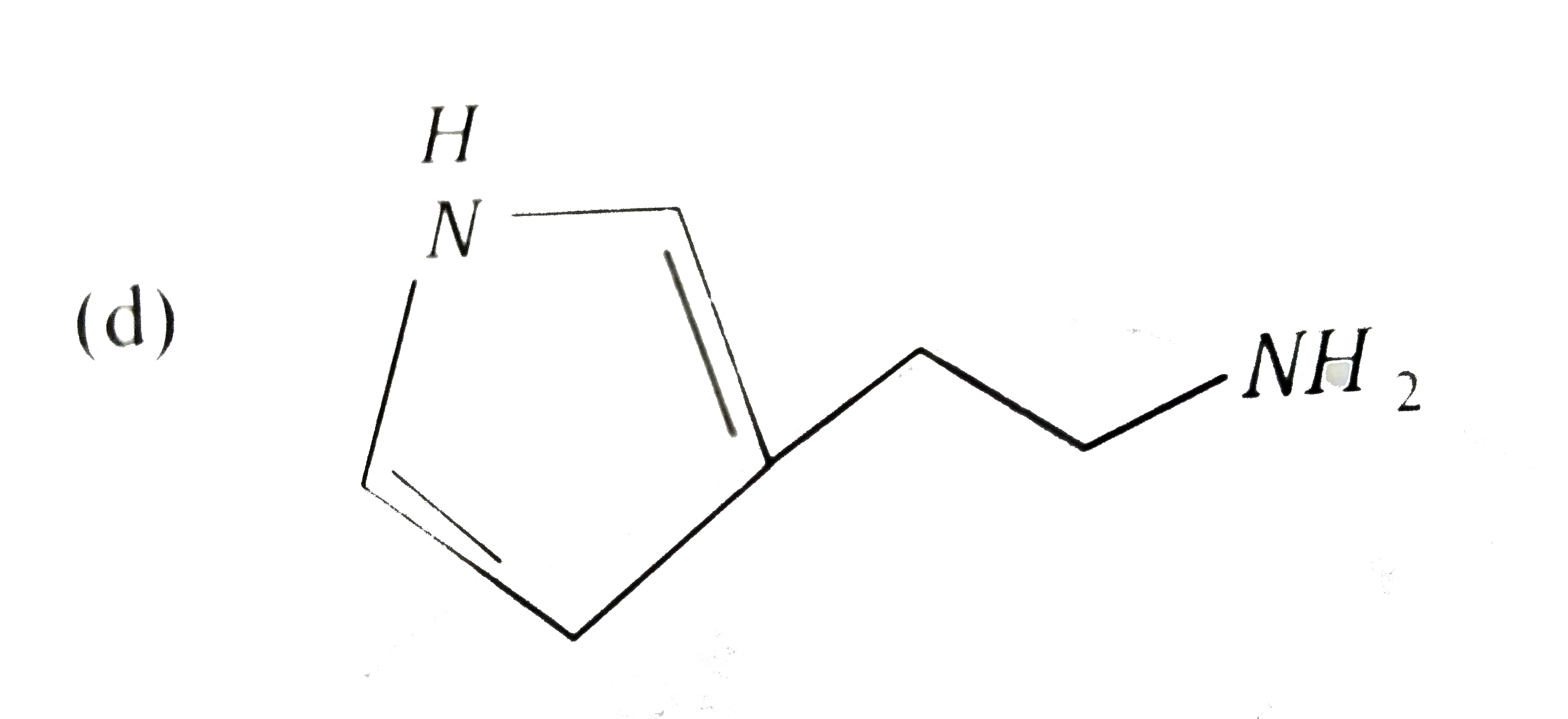Explore topic-wise InterviewSolutions in .
This section includes InterviewSolutions, each offering curated multiple-choice questions to sharpen your knowledge and support exam preparation. Choose a topic below to get started.
| 25601. |
The presence of carbon in an organic compound can be shown by : |
|
Answer» Heating with COPPER which goes black |
|
| 25602. |
The presence of a base is needed in the ammonolysis of alkyl halides. Explain. |
Answer» Solution :During ammonolysis of alkyl halides, the acid liberated during the REACTION combines with the AMINE formed to FORM the amine salt. To liberate FREE amine from the amine salt, a base is NEEDED. The base used is excess of alcoholic `NH_(3)` which serves both as a nucleophile as well as a base. for example.  . .
|
|
| 25603. |
The presence of a catalyst |
|
Answer» INCREASES the HEAT of reaction |
|
| 25604. |
The prescibed upper limit concentration of lead in drinking water is about : |
|
Answer» 30 ppb |
|
| 25605. |
The preparation of salicylaldehyde phenol is known as .... |
|
Answer» DOW's REACTION |
|
| 25606. |
The preparation of ethyl acetoacetate involves: |
|
Answer» Witting REACTION |
|
| 25607. |
The prefixes erythro and threo are used for distinguishing a pair of enantriomers containing two chiral carbon atoms when two of the atoms or groups on each chiral carbon atom are the two identical groups are on the same side of the Fischer projection formula, is called the erythro isomer while the isomer, in which the two identical groups are on the opposite sides of the fischer projection formula, is called the Threo isomer. Which among the following is a threo isomer? |
|
Answer»
|
|
| 25608. |
The prefixes erythro and threo are used for distinguishing a pair of enantriomers containing two chiral carbon atoms when two of the atoms or groups on each chiral carbon atom are the two identical groups are on the same side of the Fischer projection formula, is called the erythro isomer while the isomer, in which the two identical groups are on the opposite sides of the fischer projection formula, is called the Threo isomer. Erythro isomer among the following is: |
|
Answer»
|
|
| 25609. |
The preparation of alkyl fluoride from alkyl choloride, in presence of metallic fluorides is known as, |
|
Answer» WILLIAMSON's REACTION |
|
| 25610. |
The prefixes erythro and threo are used for distinguishing a pair of enantriomers containing two chiral carbon atoms when two of the atoms or groups on each chiral carbon atom are the two identical groups are on the same side of the Fischer projection formula, is called the erythro isomer while the isomer, in which the two identical groups are on the opposite sides of the fischer projection formula, is called the Threo isomer. Select thecorrect representation among the following: |
|
Answer»
|
|
| 25611. |
The preparation of ethyl acetoacetate involves |
|
Answer» Witting REACTION |
|
| 25612. |
The prefix 10^(18) is: |
|
Answer» giga |
|
| 25613. |
The prefered conformation of trans-1, 2- dibromocyclohexane is: |
|
Answer» diaxial |
|
| 25614. |
The predominat form of histamine present in human blood is (pK_(a) , Histimine = 6.0) |
|
Answer»

|
|
| 25615. |
The predominant product formed, when 3-methyl-2-pentene reacts with HOCl, is |
|
Answer» `CH_3-CH_2-undersetunderset(CH_3)|oversetoverset(Cl)|C-oversetoverset(OH)|CH-CH_3` Addition takes place ACCORDING to Markownikoff's rule in which `Cl^+` goes to that carbon ATOM which is more HYDROGENATED . |
|
| 25616. |
The predominant form of histamine present in human blood is (pk_(a) Histidine = 6.0)- |
|
Answer»
|
|
| 25617. |
The predominant form of histamine present in human blood is (pK_(a) Histidine = 6.0) |
|
Answer»
|
|
| 25618. |
The predominant form of histamine present in human blood is (pK_(a), Histidine = 6.0) - |
|
Answer»

|
|
| 25619. |
The predominant form of histamine present in human blood is (pK_(a), "Histidine" = 6.0) |
|
Answer»
|
|
| 25620. |
The precipitation power of ions are in the order Al^(3+) gt Ba^(3+) gtNa^(+). Similarly [Fe(CN)_6]^(4-) gt SO_4^(2-) gt Cl^(-). Give the reason behind this . |
|
Answer» Solution :(i) A negative ion causes the precipitation of positively changed sol and vice versa. (ii) When the VALENCY of ion is high, the precipitation POWER increased. So in cations the precipitation power ORDER is `Al^(3+) GT Ba^(2+) gt Na^(+)`and in anions the precipitation power order is `[Fe(CN)_6]^(4-) gt SO_4^(2-) gt Cl^(-)`. (iii) The precipitation power of electrolyte is determined by FINDING the minimum concentration required to cause precipitation of sol in 2hrs. This value is called flocculation value. The smaller the flocculation value, greater will be precipitation. |
|
| 25621. |
The precipitation of protein is called ______. |
|
Answer» PEPTISATION |
|
| 25622. |
The precipitation is noticed when an aqueous solution of : |
|
Answer» `NaNO_2` |
|
| 25623. |
The precipitateofsecond group sulphides qualitatative analysis is carried oud withhydrogen in the presence of hydrochloricacidbutnot with nitric acid .Explain. |
|
Answer» SOLUTION :The precipitate of second GROUP sulphidesin qualitative anlysis is CARRIED out with hydrogensulphide in THEPRESENCE of hydrochloride acid but not in mitricacid. Nitric acid is a strongoxidisingagent and oxides `H_(2)S` into S, So it cannot be used in thereactioninvolvinghydrogensulphide |
|
| 25624. |
The precipitate of second group sulphide in qualitative analysis is carried out with hydrogen sulphide in the presence of hydrochloric acid but not in nitric acid. Explain. |
| Answer» | |
| 25625. |
The precipitate of CaF_(2)(K_(sp) = 1.7 xx 10^(-10)) is obtained when equal volumes of the following are mixed |
|
Answer» `10^(-4) M Ca^(2+) + 10^(-4) M F^(-)` |
|
| 25626. |
The precipitate of calcium fluoride(K_(sp)=1.7xx10^(-10)) is obtained when equal volumes of the following are mixed : |
|
Answer» `10^(-4)M Ca^(2+)`and`10^(-4)M F^(-)` |
|
| 25627. |
The precipitate of CaF_2 (K_s = 1.7 xx 10^-10) is obtained when equal volmes of the following are mixed: |
|
Answer» `10^(-4)` M `CA^(2+) + 10^(-4)M F^-` |
|
| 25628. |
The precipitate of AgCl is soluble in : |
|
Answer» `NH_4OH` |
|
| 25629. |
The precipitate obtained by adding lead nitrate solution to a sodium carbonate solution is |
|
Answer» `PB(OH)_(2)` |
|
| 25630. |
The precious stone aquamarine is : |
|
Answer» Mg-Al SILICATE |
|
| 25631. |
The precious Ruby stone is : |
|
Answer» ALUMINIUM silicate |
|
| 25632. |
The prdouct/s formed when diborane is hydrolysed is/are |
|
Answer» `B_(2)O_(3)` and `H_(3)BO_3` `B_(2)H_(6) +6H_(2)O to 2H_(3)BO_(3) +6H_(2)O` |
|
| 25633. |
The P.P. of ethane over a saturated solution containing 6.56 xx 10^(-2) g of ethane is 1 bar. If the solution contains 5 xx 10^(-2) g of ethanol, then what shall be its P.P? (P.P = Partial pressure). |
|
Answer» `S_(1)/S_(2) =P_(1)/P_(2)` `P_(2) =("1 bar" xx 5 xx 10^(-2))/(5.56 xx 10^(-2)) = 0.762` |
|
| 25634. |
The p.pt. of alcohols are _______ than corresponding thiols : |
|
Answer» More |
|
| 25635. |
The power output for a certain laswer transition was found to be 2.79 watt per square meter. Givne lambda = 520nm, calculate the number of quanta emitted per square meter per second. |
|
Answer» Solution :Energy corresponding to the photon `= ( 6.626 xx 10^(-34) xx 3 xx 10^(8))/( 520 xx 10^(-9))` `= 3.822 xx 10^(-19) J ` the power output `= 2.79 ` Watt `//m^(2)` `= 2.79 J // `SEC `//m^(2)` `:.`no. of photons EMITTED per sq. METER sec`= ( 2.79 )/( 3.822 xx 10^(-18)) = 7.20 xx 10^(18)` |
|
| 25636. |
The potential of the cell for the reaction M(s)+2H^(+)(1M)toH_(2)(g)(1atm)+M^(2+)(0.1M) is 1.500 V. the standard reduction potential for M^(2+)//M(s) couple is |
|
Answer» `0.1470V` `E_(cell)=E_(cell)^(@)-(0.0591)/(2)"log"[M^(2+)]` `therefore1.50=E_(cell)^(@)-(0.0591)/(2)xxlog(0.1)` `=E_(cell)^(@)+0.02955` or `E_(cell)^(@)=1.50-0.02955=1.47045V` But `E_(cell)^(@)=E_(H^(+)//(1)/(2)H_(2))^(@)-E_(M^(2+)//M)^(@)` i.e., `1.47=0-E_(M^(2+)//M)^(@)` or `E_(MG^(2+)//M)^(@)=-1.47M` |
|
| 25637. |
The powdered pyrolusite ore when fused with KOH in presence of air forms"…...................". |
|
Answer» |
|
| 25638. |
The potential of the cell for the reaction M(s)+2H^(+)(1M)rarrH_(2)(g)(1"atm")+M^(2+)(0.1M)is 1.500V the standard reduction potential for M^(2+)//M couple is |
|
Answer» 0.1470V `M|M^(2+)(0.1M)||H^(+)(M)|H^(+)(M)|H _(2)(1"atm")` `E_("cell")=E_("cell")^(@)-(0.0591)/(2)"log"[M^(2+)]` `1.5=E_("cell")^(@)-(0.0591)/(2)"log"(0.1)` `1.5=E_("cell")^(@)+0.02955` or `E_("cell")^(@)=E_(2H^(+)//H_(2))^(@)-E_(M^(2+)//M)^(@)` `therefore 1.47=0-E_(M^(2+)//M)^(@)` or `E_(M^(2+)//M)^(@)=-1.47V`. |
|
| 25639. |
The potential of the cell for the reaction M_((s))+2H^(+)(1M)toH_(2(g)),(1atm)+M^(2+)(0.1M) is 1.500 V. the standard reduction potential for M^(2+)//M_((s)) couple is:- |
|
Answer» 0.1470V `1.5=E_(cell)^(@)-0.0296log[(0.1)/(1)]` `E_(Cell)^(o)=1.470V` `E_(Cell)^(o)=E_(H^(+)//H_(2))^(o)-E_(M//M^(2+))^(o)` `E_(M//M^(2+))^(o)=-1.470` So, `E_(M^(2+)//M)^(o)=1.470V`. |
|
| 25640. |
The potential of the cellCu, Cu^(2+) (0.1M)"//"HCl (xM), Cl_(2), Ptis 1.07 V. If the standard potential of copper and chlorine electrodes are 10.34 Vand 1.36 V,calculate the concentration of HCI. |
|
Answer» |
|
| 25641. |
The potential of standard hydrogen electrode is zero. This implies that |
|
Answer» `DeltaG_(f)^(o)(H^(+),aq)=0` if `E^(o)=0` then `DeltaG_(f)^(o)=0`. |
|
| 25642. |
The potential of the cell containing two hydrogen electrodes as represented belowPt, H_2(g) |H^(+) (10^(-6) M)|| H^(+) (10^(-4) M)|H_2(g) , Pt at 298 K is |
|
Answer» `-0.118V` |
|
| 25643. |
The potential of single electrode depends upon |
|
Answer» the name of the ELECTRODE |
|
| 25644. |
The potential of hydrogen electrode is -118 mV . The H^(+) concentration of the solution is |
| Answer» ANSWER :A | |
| 25645. |
The potential of hydrogen electrode at pH=10 and 25^(@)Cis |
|
Answer» 0.59V |
|
| 25646. |
The potential of calomel electrode depends upon the concentration of |
|
Answer» KCL solution |
|
| 25647. |
The potential of an electrode when each species involved in it exists in the standard state is called its standard potential. The standard reduction potential of a couple is the measure of its tendency to get reduced. A series obtained by arranging the various couples in order of their decreasing standard potensital is called electrochemical series. Any of the two couples of this series joined together gives an electrochemical cell in which reduction occurs at the electrode which occupiesthe higher position. The standard potential of hydrogen electrode is taken to be zero by convention. Given below are the sequence of half-reactions (acidic media) with relevant E^(@) values in volt at 298 K. MnO_(4)^(-)overset(0.50)rarr MnO_(4)^(2-)overset(2.26)rarr MnO_(2)overset(0.95)rarr Mn^(3+)overset(1.50)rarr Mn^(2+)overset(-1.18)rarr Mn Also given some more data are : Fe^(2+)overset(-0.44)rarr Fe_((s))overset(+0.036)rarr Fe^(3+) For the cell Fe_((s))|Fe^(2+)(0.1M)||100 mL 0.3M HA (pKa=5.2) mixed with 50 mL 0.4M NaOH|H_(2)(1 atm), Pt the E_("cell") at 298(2.303(RT)/(F) and "log"_(10)20=1.3) is equal to |
|
Answer» `-0.15 V` |
|
| 25648. |
The potential of an electrode when each species involved in it exists in the standard state is called its standard potential. The standard reduction potential of a couple is the measure of its tendency to get reduced. A series obtained by arranging the various couples in order of their decreasing standard potensital is called electrochemical series. Any of the two couples of this series joined together gives an electrochemical cell in which reduction occurs at the electrode which occupiesthe higher position. The standard potential of hydrogen electrode is taken to be zero by convention. Given below are the sequence of half-reactions (acidic media) with relevant E^(@) values in volt at 298 K. MnO_(4)^(-)overset(0.50)rarr MnO_(4)^(2-)overset(2.26)rarr MnO_(2)overset(0.95)rarr Mn^(3+)overset(1.50)rarr Mn^(2+)overset(-1.18)rarr Mn Also given some more data are : Fe^(2+)overset(-0.44)rarr Fe_((s))overset(+0.036)rarr Fe^(3+) The value of E^(@) for the reaction is equal to MnO_(4)^(-)+5Fe^(2+)+8H^(+)rarr Mn^(2+)+5Fe^(3+)4H_(2)O, |
|
Answer» `0.734 V` |
|
| 25649. |
The potential of an electrode when each species involved in it exists in the standard state is called its standard potential. The standard reduction potential of a couple is the measure of its tendency to get reduced. A series obtained by arranging the various couples in order of their decreasing standard potensital is called electrochemical series. Any of the two couples of this series joined together gives an electrochemical cell in which reduction occurs at the electrode which occupiesthe higher position. The standard potential of hydrogen electrode is taken to be zero by convention. Given below are the sequence of half-reactions (acidic media) with relevant E^(@) values in volt at 298 K. MnO_(4)^(-)overset(0.50)rarr MnO_(4)^(2-)overset(2.26)rarr MnO_(2)overset(0.95)rarr Mn^(3+)overset(1.50)rarr Mn^(2+)overset(-1.18)rarr Mn Also given some more data are : Fe^(2+)overset(-0.44)rarr Fe_((s))overset(+0.036)rarr Fe^(3+) The E^(@) for MnO_(4)^(-)rarr Mn^(2+) is equal to |
|
Answer» `1.054 V` |
|
| 25650. |
The potential of a hydrogen electrode at pH=10 is : |
|
Answer» `+0.59" V "` `E=E^(@)-(0.059)/(N)"log"(1)/([H^(+)])=-(0.059)/(1)PH` `=(0-0.059)/(1)xx10=0-0.59=-0.59" V"` |
|































